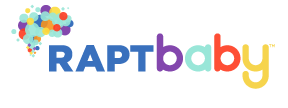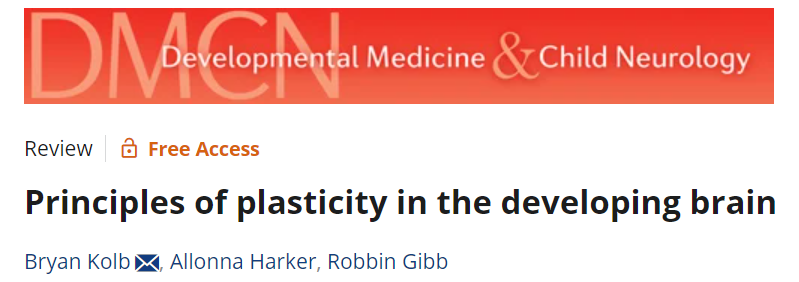
APRIL 2024
Neuroscience in the Nursery
A year in on the launch of our first product, we have a lot to be grateful for, a lot we have learned, and a lot more to do (including raising the money to fund those plans!). For all of you with children who have benefited from Smarter Sleep – and the rest of you who are just curious enough about the neuroscience of young brains to follow along, here’s a quick summary of what we have in the hopper.
Today’s Topic: What’s Up With Us
We founded RAPT Ventures a few years ago to bring the power of neuroscience into the home and give all individuals the ability to enhance brain performance for themselves and the people they love. Leveraging our Chief Scientist’s deep expertise in early language development, we created our first product, the RAPTbaby Smarter Sleep sound machine, to provide an enriched acoustic sleep environment for babies and young children that would help them (and their parents!) sleep while also providing the environmental auditory “cues” their brains expect and need to develop efficient language networks as they sleep.
We confess. We almost can’t believe that we are where we are today. A global pandemic, supply chain disruptions, factory shutdowns, translation hiccups with overseas engineers, and a web of regulations entangling every step of our journey to you – starting up a start-up is a workout! But the Smarter Sleep we finally produced is doing everything we’d hoped to help thousands of young children in one of the most critical steps in their cognitive journey – setting up their brains for language. We’ve also gotten valuable feedback that is helping us make a “Better” Smarter Sleep and informing the development of a few new products we hope to bring you soon.
Smarter Sleep 2.0
Here’s what we learned from all of you wonderful parents who appreciated the science we are trying to give you the benefit of – and who were kind enough to take time from likely frantic days (and nights!) to tell us what would make their Smarter Sleep experience even better.
Dwarfing all other concerns is the battery saver feature, which causes the unit to go into sleep mode if the battery becomes fully charged when plugged in. This feature is a relic of a time when batteries could “overcharge,” but it is not an issue today as modern battery pack circuitry prevents that overcharging. On top of that, the battery saver caused huge frustration among parents who didn’t know they could get the unit out of hibernation mode with a quick push of the power button followed by a long push.
That’s entirely on us, and we apologize to the parents who had to go to our FAQs or contact our customer support to figure out what to do. We also apologize to the parents who returned units, thinking they were broken. FYI, for all of you Amazon buyers, we have no way to communicate with you about issues like this through Amazon, so if you EVER have any questions about your Smarter Sleep operation, please reach out to [email protected] so we can help you! The long and the short of it (kind of a pun?) is that the battery saver feature will disappear in Smarter Sleep 2.0.
The second pain point expressed by parents is thinking there’s no continuous play option. There is. Once Smarter Sleep is powered on, its power button cycles the unit through 30, 60, and 90-minute timer settings (the relevant timer light will show what setting the unit is on) with the next push after 90 putting the unit on continuous play (all timer lights will be off). To lower the hassle of searching for directions or reaching out to us, we hope to make the continuous play setting much more apparent on Smarter Sleep 2.0.
Finally, parents ask us for a higher maximum volume setting. Right now, our volume limit is 75 dB, above the level young children should be exposed to for any length of time. However, because the volume the child hears is diminished the further they are from the audio source, the 75 dB cutoff allows parents to place the unit at some distance from where the child sleeps and still have sufficient volume to deliver Smarter Sleep’s benefits. But we hear you all and will raise the max limit to 85 dB, with a strong re-emphasis of our existing caution to check the sound level the baby actually hears because excessive volume can damage their sensitive ears.
Next for Baby – Smarter Sleep Goes 24/7
We know that children who hear relevant acoustic cues when awake, for as little as 10 minutes a week, show persistent improvements in information processing speed, attentiveness, and performance on age-appropriate measures of language development compared to children who don’t get that exposure. So, adding a daytime option to Smarter Sleep would give parents a new way to enhance their child’s cognitive progress. We’ve already started developing the tracks for what we’re tentatively calling Smarter Sleep/Smarter Day, and we believe this could be another game changer for the nursery.
And One for Adults
We’ve lost count of the number of parents who told us they will get their own Smarter Sleep once they stop co-sleeping with their baby. We get it. Smarter Sleep’s tracks can be just as good at inducing sleep-compatible alpha and delta brain waves in adults as in children. But what parents (and those grandparents who’ve reached out to us about this) don’t realize is that the embedded acoustic cues can be good for them, too!
Here’s why. As we get older, it becomes more challenging to hear in noisy settings. In fact, some of you in your thirties might already be complaining that it’s hard to have a conversation in a loud restaurant. Part of that problem comes because, as we age, we lose hair cells in our ears that help us detect the difference between similar sounds. Science has no solution for that yet (although many people are working on this issue given Gen Z’s alarming rate of hearing loss, in part driven by their lifelong habits of high-volume listening on their headphones of choice). But another factor is that the finely-tuned language networks that process individual sounds – which we worked so hard to create when we were young – have begun to degrade.
We think we can help. The adult brain is still plastic (able to change in response to external stimuli), even if it’s much less so than when it was young. As a result, we believe listening at night to pre-linguistic acoustic stimuli that mimic the tiny transitions that underlie all languages, just as infants are doing now to build their initial language maps, can help retune and repair the connections that help process language phonemes, allowing you to tell once again if someone is saying bad or pad when they’re talking to you at a cocktail party. We’re working on an adult version of Smarter Sleep, but for now, if you’re over five and still want to try and repair your language networks while you sleep, go ahead and buy yourself a Smarter Sleep. We won’t tell.
The Parenting Takeaway
The benefits of enriched auditory environments don’t end with Smarter Sleep, and we are dedicated to raising the money to bring those new products and even more brain benefits to your home.
A Source for More: #1
The popular characterization of development as some combination of nature vs. nurture isn’t a bad construct, but as this article explains, “we now know that an unexpectedly large range of experiences alter brain development and that even fairly innocuous-appearing experiences can profoundly affect [it].”
A Source for More: #2
This recent Journal of Neuroscience article discusses a study demonstrating plasticity in the sleeping adult brain in response to auditory stimuli.
RAPTbaby Recommendation: Send Us Your Thoughts!
This is not really a recommendation as much as a plea: We would greatly appreciate your comments on where we’re headed (including ideas that’ll help our fundraising efforts because our new products require new money). We’re here all day, all night—mostly—at [email protected] and, as always, value any observations you send our way.


